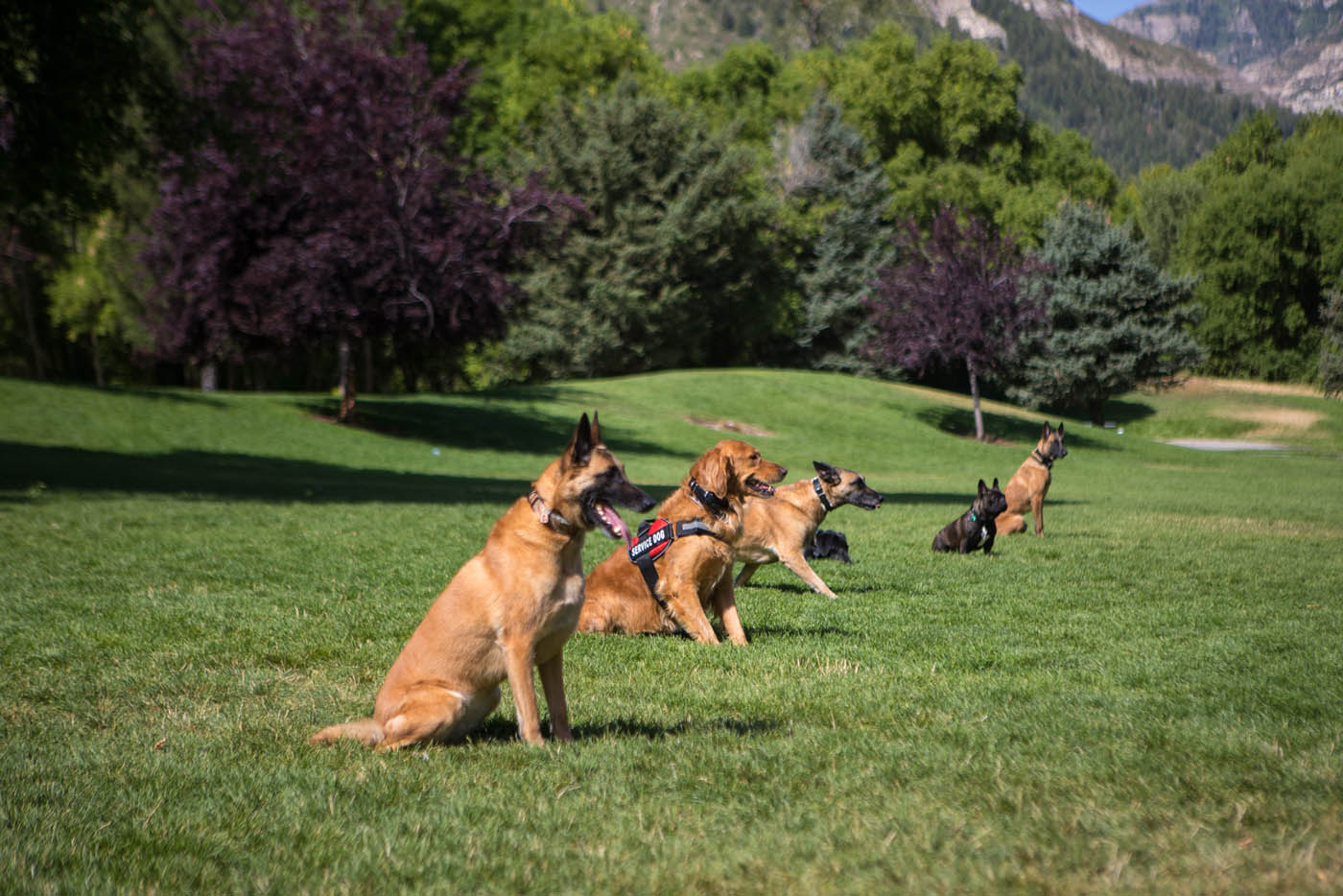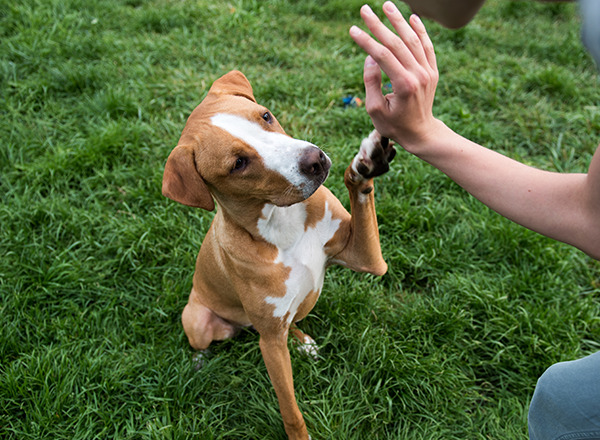Beginner's Overview to Effective Dog Training at Home
Effectively educating a pet dog at home calls for a nuanced understanding of canine behavior and efficient communication techniques. Developing clear training goals, using premium rewards, and maintaining consistency across household members are vital components. Integrating training into day-to-day regimens can enhance both interaction and retention.
Recognizing Dog Actions
Comprehending pet dog habits is necessary for reliable training and fostering an unified connection in between humans and their canine buddies. Pets connect primarily via body movement, articulations, and face expressions, making it vital for owners to analyze these signals precisely. Acknowledging habits such as tail wagging, growling, or cowering can give understandings right into a dog's psychological state and purposes.

Usual behavioral problems, such as aggressiveness, stress and anxiety, or excessive barking, usually come from misconceptions or unmet needs. Observing and addressing these problems without delay can prevent escalation and ensure a positive training experience. By promoting a deep understanding of pet habits, owners can tailor their training techniques to fit their canine companions, ultimately causing a mannerly and contented pet.
Necessary Educating Devices
A well-appointed training space can considerably improve the efficiency of pet dog training at home. Important training tools make sure that both the canine and the fitness instructor can participate in effective sessions that cultivate learning and bonding.

Investing in a sturdy chain and a comfy, well-fitting collar or harness is crucial for safety and security and control. These devices help develop limits and make sure the canine remains safe and secure during training. Furthermore, a designated training location, devoid of diversions, help focus for both the pet dog and the instructor.
Educating aids such as training pads, cones, or dexterity equipment can likewise improve the experience by presenting variety and difficulties. Having a notebook or digital app for tracking progression can be vital, allowing you to note successes and locations for enhancement. Utilizing these crucial devices will produce a favorable training environment and lay the foundation for reliable knowing.
Developing an Educating Regimen
Developing a consistent training routine is crucial for effective canine training at home. A well-structured routine not just aids in strengthening desired habits however additionally supplies your dog with a complacency and predictability. To create an efficient training regular, begin by identifying particular training objectives, such as standard commands, leash walking, or house-breaking.
Pick a marked time each day for training sessions, ideally when your pet dog is responsive and alert. Sessions ought to be short, roughly 5 to 15 mins, to preserve focus and avoid tiredness. Uniformity in timing and setting will certainly boost your pet dog's understanding experience.
Incorporate training into daily activities to reinforce skills. For instance, practice commands during strolls or nourishment, which incorporates finding out right into all-natural regimens. Additionally, stay versatile and adjust the regular as required, suiting your dog's power degrees and state of article source mind.
Positive Reinforcement Methods
Positive reinforcement techniques are basic to efficient dog training, promoting preferred behaviors via benefits as opposed to penalty. This method uses positive stimuli, such as deals with, appreciation, or playtime, to urge dogs to repeat details actions. The cornerstone of this method is timing; benefits must be given right away following the desired actions to produce a clear organization.
When carrying out positive reinforcement, it is necessary to select rewards that are encouraging for your pet dog. High-value treats, such as little items of poultry or cheese, can be particularly reliable during training sessions. Furthermore, differing the incentives can preserve your dog's rate of interest and excitement.
Start with simple commands, like "rest" or "stay," and slowly progression to much more complex jobs. Uniformity is key; make certain that all member of the family use the exact same commands and incentive systems to avoid complication.
Additionally, it is vital to stay client and stay clear of irritation. Canines, like human beings, find out at their very own rate. By fostering a supportive training environment via positive reinforcement, you can improve your pet dog's learning experience while enhancing the bond in between you and your hairy buddy, laying the groundwork for successful training results.
Usual Educating Obstacles
While training a pet in the house can be a satisfying experience, it commonly comes with a set of typical difficulties that can examine both persistence and uniformity. One prevalent issue is diversion. Dogs might end up being quickly averted by noises, movements, and even aromas in their setting, making it hard to preserve their emphasis throughout training sessions.
An additional challenge is disparity in commands and reinforcement. It can hinder and puzzle the canine development if household members use various signs or incentives. Establishing a unified strategy is important for effective communication.
In addition, canines can experience stress or stress, especially if they do not recognize what is anticipated of them. This can lead to unwanted habits, such as barking or chewing.
Finally, the timing of navigate here reinforcement is essential (Dog training). Postponed benefits can diminish the performance of favorable reinforcement, as dogs might stop working to connect the habits with the reward
Getting over these difficulties calls for commitment, clear interaction, and an organized training plan. Acknowledging and dealing with these usual barriers will lead the means for a much more successful and delightful training experience at home.
Verdict
To conclude, effective pet dog training at home necessitates a thorough understanding of canine habits and reliable interaction methods. By establishing Get More Information clear training objectives and making use of top notch treats alongside favorable support, the training process comes to be much more rewarding for both the fitness instructor and the pet. Consistency, adaptability, and patience are crucial components that assist in knowing. Inevitably, incorporating training right into daily routines boosts the bond in between pet dog and proprietor, making the experience both enjoyable and efficient.
Establishing a consistent training routine is vital for efficient canine training at home.Positive reinforcement methods are basic to efficient canine training, promoting desired habits via benefits rather than punishment (Dog training). By cultivating an encouraging training environment via favorable reinforcement, you can improve your canine's knowing experience while reinforcing the bond between you and your hairy friend, laying the groundwork for successful training end results
In final thought, successful dog training at home demands a thorough understanding of canine habits and reliable interaction methods. By establishing clear training objectives and using high-grade deals with along with positive support, the training process comes to be a lot more gratifying for both the fitness instructor and the pet dog.